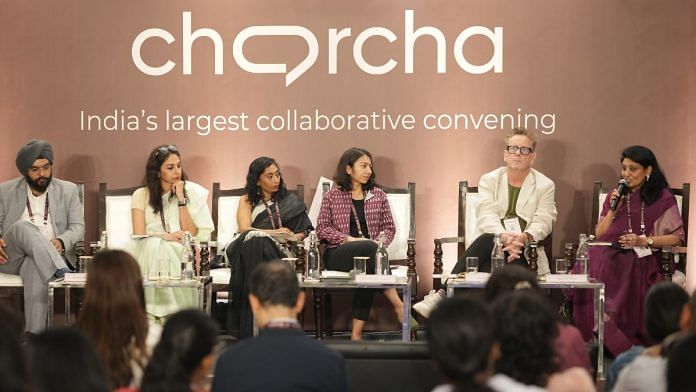


While technology holds immense potential to transform the lives of millions, particularly women and girls who have long faced barriers in education, employment, and empowerment, the digital gender divide in India remains a significant challenge. As per the National Family Health Survey 2019-2021 (NFHS-5), only 54% of women owned a mobile phone compared to 82% of men, and only 33% of women have ever accessed the internet, versus 57% of men. This gap is even more stark in rural India, where societal norms, limited digital literacy, low awareness of digital opportunities and safety concerns further impede access for women.
Closing this gap is not only a matter of fairness and equity; it is an economic imperative. A McKinsey Global Institute report suggests that closing the gender gap in labour force participation, education, and digital access could add $700 billion to India’s GDP by 2025. Realising this calls for collaborative partnerships between the government, civil society and corporates to solve for the barriers of access, literacy, and safety, and foster inclusive growth to empower women to thrive in the digital economy.
Of the 7.4 crore individuals who enrolled in the training, 6.45 crore completed it, and only 4.83 crore received certification, highlighting that while training is essential, there is a need for continued engagement to mitigate dropouts and communicate the opportunities the digital world presents. Notably, while the programme aimed for at least 40% female participation, women accounted for over 50% of participants across all three phases.
Also read: Gender equality lies beyond the paycheck. Women must turn leaders, charcha 2024 can help
Equipping women with digital skills such as coding, data literacy, and cybersecurity can unlock new career opportunities and help close the technology gender gap. Initiatives like Girls Who Code have demonstrated success in narrowing this divide. To achieve a broader, nationwide impact, programmes must be inclusive and designed to engage diverse communities by offering culturally sensitive content in local languages. Khabar Lahariya is an example of how equipping women with digital skills and providing access to a digital news-sharing platform has fostered a community of rural women journalists. Initiatives like Cisco’s Network Academy and the Amazon Future Engineer programme also exemplify this approach, as they focus on not only providing digital literacy to millions but also democratise access.
For many women, particularly those in rural or low-income households, digital access is not merely about being connected — it is about financial security. Flexible and remote work can help more women, particularly those with caregiving roles, enter the labour force. Platforms like SHEROES and Mahila e-Haat provide digital employment opportunities for women, enabling them to work from home, while balancing caregiving responsibilities, a significant need for those who face societal or familial barriers to full-time employment outside the home.
Since 2019, the BT Group and the British Asian Trust have been strategic partners to empower adolescents and young adults, primarily girls, through digital literacy and STEM education. The programme has reached over one million adolescents and 1.5 million parents, teachers, and community members. What is unique about the programme is its holistic approach to digital inclusion that goes beyond technical training by targeting both individuals and their wider social context, and breaking down systemic barriers that hold women back.
For instance, one of the programme partners, Mentor Together, has connected more than 18,000 young people with mentors through the programme, equipping them with essential career-ready skills, including digital proficiency and workplace competencies, and a robust support system that nurtures their self-confidence and leadership abilities. This dual approach of education and mentorship has been a powerful tool in empowering young girls to develop fit-for-future skills for their careers, as well as break free from societal limitations.
Also read: Collaboration is key for Viksit Bharat. charcha 2024 provided a platform for it
The recent panel hosted by the British Asian Trust on digital pathways to empower young women at the charcha 2024 platform brought together insights from organisations like BT, Meta, Cisco, NASSCOM Foundation, and Mentor Together. The discussion emphasised the integration of digital literacy into school curricula, establishing a digital network of mentors to support young girls at scale, and creating language-inclusive digital platforms. Additionally, the significance of using data and evidence to scale interventions was underscored, with cross-sector partnerships identified as key to driving scale and impact.
So, what could this collaboration look like? The government must actively drive digital inclusion through policies that not only promote internet access and affordable technology but also prioritise the unique needs of women and girls. Civil society organisations play a vital role in this landscape, as their insights are essential for tailoring solutions that resonate with the specific challenges faced by women in diverse communities. The Digital Empowerment Foundation’s Community Information Resource Centres which focus on providing access, digital literacy and e-governance services for women in rural areas is a case in point. Corporates in IT and telecom specifically, can leverage their expertise to invest in digital infrastructure and provide digital employment opportunities to women from underserved communities. There is also a need for bold, sustained investments from corporates and philanthropies alike, to bring every woman into the fold.
All actors—government, civil society, and business—must collaborate to close the digital gender gap. The challenge is significant, but the rewards—a future where women lead in innovation and progress—are profound. By closing the digital gender divide, we can open the door to a future where women not only participate in India’s growth story, but also lead it.
charcha is an initiative towards closing the distance between samaaj, sarkaar and bazaar, (society, government and markets) and was held at India Habitat Centre, New Delhi from August 20-22, 2024.
To know more, visit charcha 2024.
Yasmin Riaz is the Head of Development (India), British Asian Trust. Views are personal. ThePrint is a media partner for charcha, organised by The/Nudge Institute.



